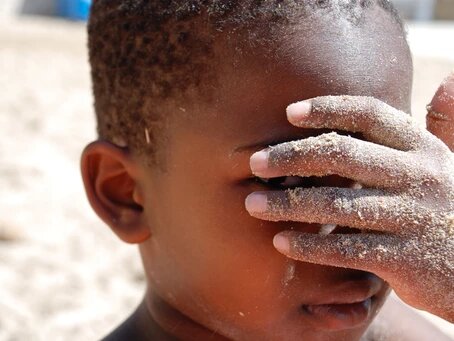Domestic violence refers to the different forms of violence inflicted on people in
a familial set-up, typically male inflicted violence on women in a marital relationship. Domestic Violence against women in India is the top gender-related crime, as per the data released by the National Crime Bureau (NCRB) in 2018, with Uttar Pradesh being nailed as the most unsafe state for women in the country and reportedly during the four phases of the lockdown, more domestic violence cases have been filed in the said duration than recorded in the similar period in the last 10 years. But even this piece of information does not convey the severity of matter since about only 86% of women who experience domestic violence do not report it and therefore the official data represents only one-quarter of the total number women who experience domestic violence. Between March 25 to May 31 of this year as many as 3, 11,477 complaints were made by women. So, domestic violence became a raging issue in India while authorities were concerned about the spread of the disease and economic loss occurred due to the lockdown.
However, this phenomenon is not limited to India the increase in the cases of domestic violence is a global phenomenon, and occurs in a similar pattern in all over the world and has put one vulnerable group to greater risk, the situation has been similar in the USA, UK, China, France. As per a report of The Guardian “The increased threat to women and children was a predictable side effect of the coronavirus lockdowns, said, activists. Increased abuse is a pattern repeated in many emergencies, whether conflict, economic crisis or during disease outbreaks, although the quarantine rules pose a particularly grave challenge.”
The understanding of the issue of domestic violence must not be perceived as an issue only women face in marital relationships, it is important to remember that children are equally susceptible to domestic violence, according to the World Health Organisation; violence against children includes all forms of violence against people under 18 years old whether perpetrated by parents or other caregivers or peers. Another study by UNICEF carried out on the parenting practices in India shows that there are 30 different forms of abuses children suffer from physically, verbally and emotionally. Even if the children are not the direct victims of violence is living in a violent household and witnessing violence form a young age may affect all over the development of children. According to UNICEF, every year about 275 million children suffer on account of their parents having a violent relationship and they go through physical, psychological abuse and injury, negligent treatment, exploitation and sexual abuse. The exponential increase in the cases of domestic violence haven’t spared the younger members of the families during the first week of lockdown, as per a report by the Hindustan Times the Childline India, organisation children can reach out to in distress received over 92000 SOS calls from different part of the country, seeking protection from violence and abuse. The cause of this rise may be the absence of assistance and help on the ground level which occurred in consequence of the lockdown along with confining them to their homes which makes it impossible to escape their abusers. Women in India anyway do not usually choose to leave their abusive husbands especially when she is a mother and the lockdown has left women with little options as leaving their houses seemed terribly unsafe. The threatening factors for the children are social isolation, parents and caregivers stress and with the closure of all schools and daycare centres has removed the children from under the watchful eye of the teachers and/or counsellors for a fairly long time, and in case some the children are confined in their houses with their abusers they are physically separated from the people who could provide help and social and emotional support.
Living in a violent household may have considerable adverse effects on the health of both women and children. Violence against women exposes them to several physical, mental sexual and reproductive hazards, including sexually transmitted diseases and infections like HIV unintended pregnancies etc. As per the United Nations Population Fund (UNFPA) report, 47 million women in countries with low to middle-income would be incapable to sought to any modern contraceptives due to the lockdown and disruption in health services during the covid-19 pandemic which could lead to about 7 million unwarranted pregnancies. The impact of child abuse also includes severe issues like death, severe injuries, impaired brain and nervous system developing, negative coping which consists of alcoholism drug, abuse, eating disorders and other perilous or aggressive behaviours to cope with stress or anxiety. Furthermore, UNICEF states in a report that “Boys who are exposed to their parents’ domestic violence are twice as likely to become abusive men as are the sons of non-violent parents. Furthermore, girls who witness their mothers being abused are more likely to accept violence in a marriage than girls who come from non-violent homes.”
So we’re easily assuming that staying home is staying safe during the coronavirus
pandemic, let us not forget the home is not a safe space for all individuals. A number of women and children are confined in small spaces with their abusers and are under great threat, they’re living under constant fear physical, emotional, and sexual abuse. Apart from the threat of being abused, constantly living in the vicinity of the abusers which in this case are immediate family members make seeking help very difficult for the victims leaving them trapped with their abusers.
References
Ravichandran, Prabhadevi. Anuradha Kunal Shah. Prabhu Ravichandran. “Shadow pandemic: domestic violence and child abuse during the covid-19 lockdown in India”, International Journal of Research in Medical Sciences. 8th August 2020. www.msjonline.org2020 <file:///C:/Users/ASUS/Downloads/Shadow_pandemic_domestic_violence_and_child_abuse_.pdf>. [accessed on 23rd Septeber, 2020].
Bhardwaj, Ananya. “Domestic Violence top crime against women, sedition, cases doubled in 2018: NCRB” The Print, 10th January 2020. <https://theprint.in/india/domestic-violence-top-crime-against-women-sedition-cases-doubled-in-2018-ncrb-data/347814/>. [accessed on 21st September, 2020]
Harrison, Emma Graham. Angela Giuffrida. Helena Smith. Liza Ford “Lockdowns around the world bring rise in domestic violence” The Guardian. 28th March, 2020. <https://www.theguardian.com/society/2020/mar/28/lockdowns-world-rise-domestic-violence>. [accessed on 21st September, 2020]
“Domestic violence against children”.UNICEF. <https://www.unicef.org/sowc07/docs/sowc07_panel_2_1.pdf>. [accessed on 22nd September 2020].
“Violence against Children” World Health Organisation, 8th June, 2020. <https://www.who.int/news-room/fact-sheets/detail/violence-against-children>. [accessed on 20th September, 2020].
Radhakrishnan, Vughnesh. Sumant Sen. Naresh Singaravelu. “Data | Domestic violence complaints at a 10-year high during COVID-19 lockdown”. The Hindu. 24th June , 2020.<https://www.thehindu.com/data/data-domestic-violence-complaints-at-a-10-year-high-during-covid-19-lockdown/article31885001.ece>. [accessed on 20th September, 2020].
Image- Sofia Alejandra




